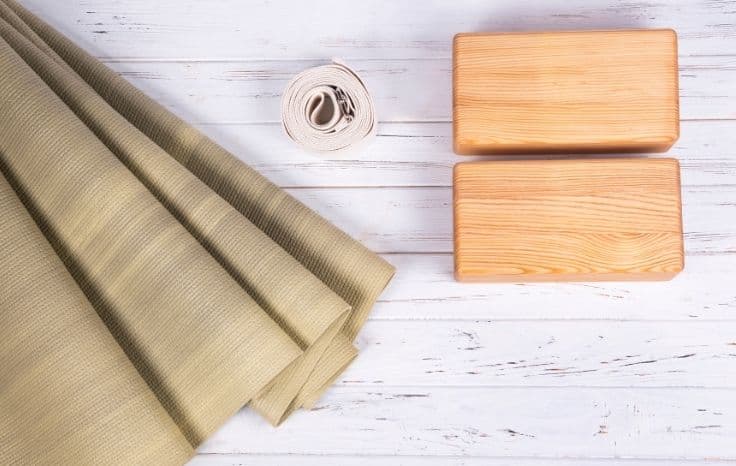This post contains affiliate links. Read the full disclosure here.
When I was a beginner practicing yoga I was always reluctant to grab props for my practice because I assumed they were a sign of my inability to do all the things in yoga.
About 15 years ago, I started practicing with an amazing Iyengar teacher. I stumbled upon her studio by accident. (It was close to home and had a class schedule that fit my schedule). Iyengar yoga is very different from vinyasa (though still in the hatha yoga family), in that there is a strong focus on slowly moving into the poses to find proper alignment with a heavy focus on props to achieve that.
This is a really oversimplified description of Iyengar yoga but if you’re interested in learning more I suggest you read about it here and here.
During my time practicing with this teacher, I learned so much about the importance of props and how they were not there as a crutch but as a way to experience poses in their fullness. I was able to strengthen and deepen my practice in ways I was not able to before.

Now, as a vinyasa yoga teacher, I’m a huge advocate for props and still use them in my practice daily. I encourage you to look at props as a way of experiencing poses fully and strengthening your practice. So how do you use yoga props?
1. Blocks
Yoga blocks can be used to help with balance and support. They are useful in standing, sitting and supine (laying down) poses. It’s good to have two blocks for your practice. If you don’t have blocks, you can use really sturdy books. Just experiment with the height, thickness and sturdiness of the books.
When to use Blocks
Blocks can be used in several different ways.
- To bring the floor closer to you
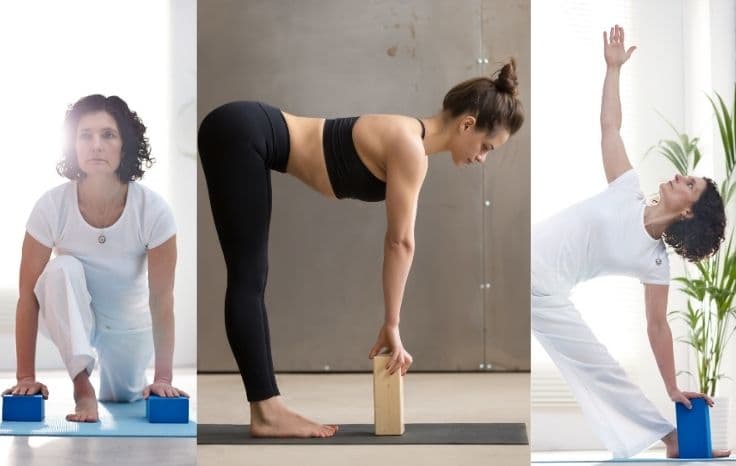
For example, if you find yourself rounding your back in forward fold or halfway lift, you can use blocks to rest your hands on. Or if you need additional support reach the ground in a low runners lunge, blocks can be helpful as well.
2. For Support
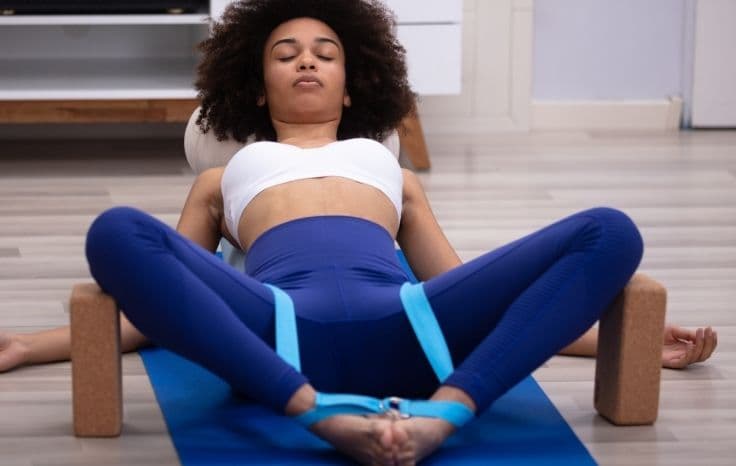
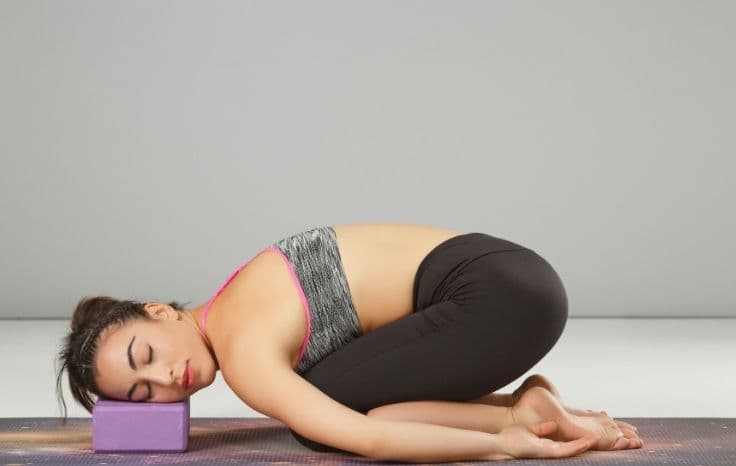
Blocks can be placed under the back during bridge pose to support the lower back, under the knees in Bound Angle pose, or under the forehead in child’s pose.
Best Yoga blocks for beginners
2. Straps
For those of us that can’t touch our toes (that’s a lot of us), straps are an incredible tool. A yoga strap is essentially an extension of your arm. You can use a belt or tie if you don’t have a yoga strap at home
When to use straps
- To reach your toes

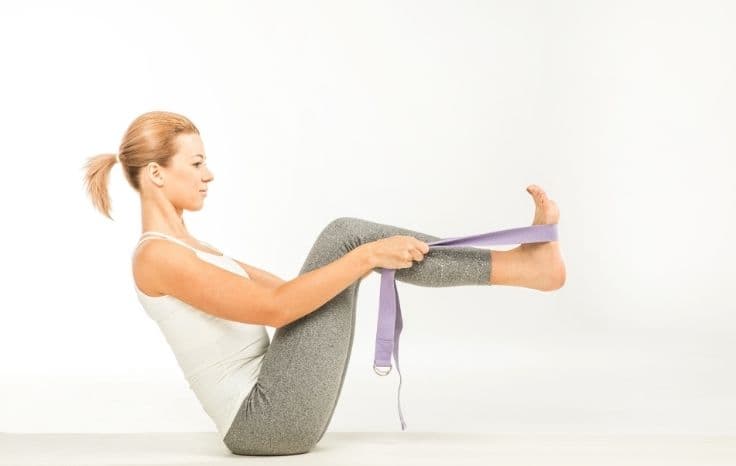
If you can’t touch your feet without rounding your back in a seated forward fold, wrap a strap around the ball of your foot and hold the strap in both hands.
2. Connecting your hands behind your back

If you find you are unable to clasp your hands behind your back in cow face pose or during another bind a strap can bridge the gap between your hands.
Best straps for beginners
Blankets
A yoga blanket is a versatile prop that can be used to improve posture, provide padding and even keep you warm! Any soft blanket at home will do.
When to use a blanket
- Use a folded blanket under your seat to bring your hips up and help lengthen your spine or between your seat and your heels in child’s pose to find deeper relaxation.
- Place a folded blanket under your knees for extra padding when on all fours or wrap the blanket around your ankles in easy seated pose for extra ankle support.
- During savasana our body temperature will drop. Draping a blanket over your body will keep you warm and allow you to stay longer in savasana.
Best Yoga Blankets for beginners
Bolsters
Bolsters are another versatile yoga prop. It can be used to provide additional height that a folded blanket can’t provide or under your back to provide support when laying down.
When to use a bolster

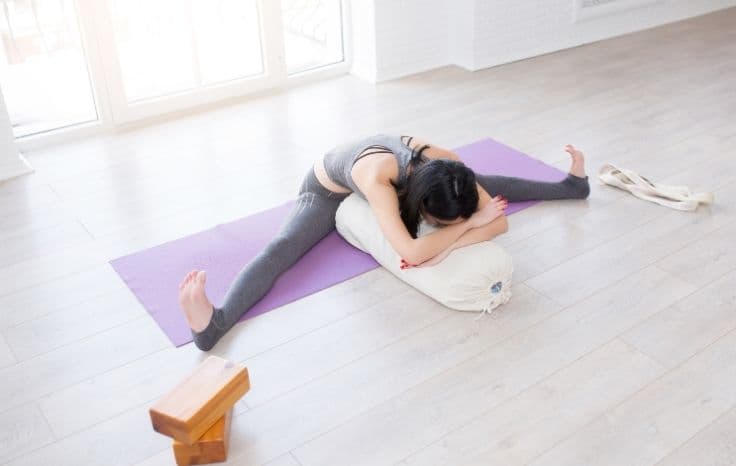

- Use a bolster under your back in reclined bound angle pose for a greater heart opening.
2. Use it in seated wide legged forward fold to rest your forehead on.
3. Sit on a bolster in easy seated pose or heroes pose when a stack of blankets isn’t enough.
